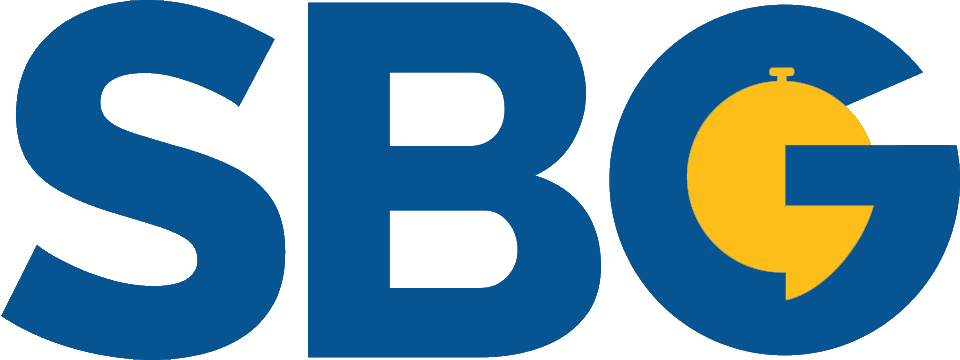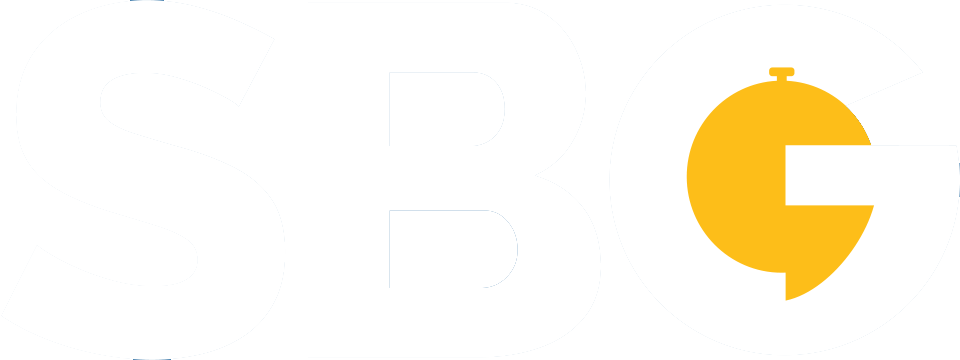Running a call center comes with its challenges, and one of the most important factors to focus on is call center productivity. This refers to how effectively your team handles customer calls, resolves issues, and maintains overall performance.
Understanding and measuring call center productivity is crucial because it helps you identify what’s going well and where improvements are needed. Once you have a clear picture, you can take actionable steps to enhance your team’s efficiency and customer satisfaction.
In this guide, we’ll walk you through what call center productivity means, how to measure it using key metrics and offer practical tips to boost your team’s performance. Ready? Let’s get started!
What Is Call Center Productivity?
Call center productivity is all about how well your call center is functioning. Are your agents resolving customer issues quickly? Are customers leaving the interaction satisfied? These are the kinds of questions that productivity metrics help answer.
Why Does Call Center Productivity Matter?
When your call center is productive, your customers are happier, your agents are more motivated, and your business runs more smoothly. In a productive call center, agents can handle more customer interactions effectively, leading to higher customer satisfaction scores and better overall center performance.
Also, before we dive into specific steps that you can take, you have to understand that there are a lot of other, more “basic” factors that influence productivity. Here are just some of them:
- Training and Development: Well-trained agents are more capable of handling a wide range of customer inquiries and resolving issues quickly. Investing in continuous training ensures that your agents are always up to date with the latest procedures and tools.
- Technology and Tools: Using the right center software and tools like interactive voice response (IVR) can streamline operations, reduce manual workloads, and allow agents to focus on more complex tasks that require human intervention.
- Work Environment: A positive and supportive work environment leads to higher motivation and better performance. Factors like a good team culture, recognition programs, and a healthy work-life balance can significantly boost agent productivity.
Of course, there’s always the option of outsourcing a professional customer support team, which allows you to get to the goal without disrupting the internal team.
Understanding these broader aspects of call center productivity will give you a more comprehensive view of what drives success in your call center, allowing you to make informed decisions on how to improve performance. Now, let’s jump to the specific metrics that will surely help you increase productivity!
Key Metrics to Measure Call Center Productivity
Let’s start with something trackable – your metrics. Data-driven information has proven to be the best approach to improving performance many times, so it’s only natural that we start with that. Here are some metrics that can help you improve productivity:

1. Average Handle Time (AHT)
Average Handle Time (AHT) is a critical metric for assessing call center productivity. It measures the average duration an agent spends on each call, from the moment they answer to when they finish any post-call work, such as entering notes or sending follow-up emails.
A low AHT can be a sign that your agents are efficient and able to handle calls quickly, which allows your call center to manage a higher volume of calls. However, focusing too much on reducing AHT can backfire if it leads to rushed interactions where customer issues aren’t fully resolved. This can result in repeat calls, frustrated customers, and, ultimately, lower customer satisfaction scores. The key is to balance speed with quality, ensuring that each call is handled efficiently while still addressing the customer’s needs thoroughly.
How To Improve It?
To reduce AHT without compromising service quality, consider providing agents with more intuitive tools and streamlined processes. For example, using advanced center software that integrates customer data and history can allow agents to quickly access relevant information, which speeds up problem-solving.
Also, offering agents regular training sessions focused on call management and effective communication techniques can help them become more adept at handling calls efficiently while maintaining high service standards. Automating routine tasks and enabling agents to access frequently needed information through a centralized system can also significantly reduce the time spent on each call.
2. Resolution Rate
The Resolution Rate measures the percentage of customer issues resolved on the first call. This is a vital metric because it directly influences both customer satisfaction and operational efficiency.
A high resolution rate indicates that your agents are effective at resolving customer issues without the need for follow-up calls or escalations. This not only reduces the strain on your call center but also enhances the customer experience, leading to higher satisfaction and loyalty. On the other hand, a low-resolution rate suggests that customers often have to call back multiple times to get their issues resolved, which can increase operational costs, frustrate customers, and lower overall satisfaction.
How To Improve It?
To boost your resolution rate, focus on improving the skills and knowledge of your agents. This can be achieved through targeted training programs that emphasize problem-solving and decision-making skills. Empowering agents to make decisions without needing to escalate every issue to a supervisor can also lead to faster resolutions.
In addition, ensuring that your center software is equipped with comprehensive customer data, troubleshooting tools, and access to a knowledge base can give agents the resources they need to resolve issues more effectively on the first call. Regularly reviewing calls where issues were not resolved on the first contact can provide insights into common barriers to resolution and help you refine your training programs and processes.
3. Customer Satisfaction Scores (CSAT)
Customer Satisfaction Scores (CSAT) are derived from surveys conducted after customer interactions with your call center. These scores provide a direct measure of how satisfied customers are with the service they receive.
High CSAT scores are a clear indicator that your call center is meeting or exceeding customer expectations. Satisfied customers are more likely to remain loyal to your brand, make repeat purchases, and recommend your services to others. Conversely, low CSAT scores can signal problems within your call center, such as long wait times, unresolved issues, or poor communication from agents. Addressing these issues is crucial to maintaining a positive reputation and retaining customers.
How To Improve It?
Enhancing CSAT requires a multifaceted approach. Start by analyzing the feedback from customer surveys to identify common complaints or areas of concern. If customers frequently mention issues such as long wait times or unresolved problems, these are critical areas to address. Providing agents with continuous training in customer service skills, such as active listening and empathy, can also help improve the overall customer experience.
Implementing a responsive feedback loop where customer concerns are quickly acknowledged and addressed can demonstrate to customers that their opinions are valued and taken seriously, which can lead to higher satisfaction scores. Regularly reviewing and acting on feedback from CSAT surveys will help you make informed improvements that align with customer expectations.
4. Customer Wait Times
Customer wait times refer to the amount of time a customer spends waiting before they can speak to an agent. This metric is a significant factor in determining customer satisfaction and overall service quality.
Long wait times are one of the most common complaints among customers and can significantly impact their perception of your service. If customers are left waiting too long, they may become frustrated and abandon the call, or worse, decide to take their business elsewhere. Prolonged wait times can also lead to more challenging interactions once the customer is connected, as they may already be irritated by the delay. Managing wait times effectively is crucial to maintaining customer satisfaction and ensuring a positive customer experience.
How To Improve It?
Reducing wait times often requires optimizing your workforce management. This includes adjusting staffing levels during peak hours to ensure that enough agents are available to handle the volume of incoming calls. Utilizing predictive analytics can help forecast call volumes more accurately, allowing you to schedule agents more effectively.
On top of that, implementing an interactive voice response (IVR) system can help manage call traffic by routing customers to the appropriate department or allowing them to resolve simple inquiries without speaking to an agent. Cross-training agents to handle multiple types of calls can also help your call center adapt to surges in demand, reducing overall wait times.
5. Call Abandonment Rate
The Call Abandonment Rate is a metric that measures the percentage of customers who hang up before reaching an agent. This can occur when customers are frustrated by long wait times or find the IVR system too cumbersome.
A high call abandonment rate indicates that customers are not willing to wait for service, which can lead to lost business and negative word-of-mouth. It also suggests inefficiencies in your call center’s operation, such as insufficient staffing during peak times or an overly complex IVR system.
How To Improve It?
To reduce the call abandonment rate, focus on minimizing wait times by optimizing your staffing levels and using predictive analytics to forecast peak call periods. Simplifying your IVR system to make it more user-friendly can also help keep customers engaged while they wait to speak to an agent.
Also, you should consider offering a call-back option, where customers can choose to receive a call when an agent becomes available rather than waiting on hold. This approach can significantly improve the customer experience and reduce the likelihood of abandoned calls.
6. First Call Resolution (FCR)
First Call Resolution (FCR) measures the percentage of customer issues resolved during the initial call without the need for follow-ups or escalations. It’s a key indicator of both agent effectiveness and customer satisfaction.
A high FCR rate is one of the best indicators of a well-functioning call center. It means that agents are skilled and knowledgeable enough to resolve issues quickly and effectively, which enhances customer satisfaction and reduces the overall workload. Customers appreciate not having to call back multiple times, which boosts their perception of your service.
How To Improve It?
To improve FCR, ensure that your agents are well-trained in both problem-solving and the specific products or services they are supporting. Empower agents with the authority to make decisions that can resolve issues on the spot, reducing the need for escalations.
Providing agents with access to a comprehensive knowledge base and real-time customer data through your center software can also help them resolve issues more efficiently. Regularly reviewing calls that require multiple interactions can highlight areas where further training or process improvements are needed.
Pro Tips For Boosting Call Center Productivity
Improving call center productivity requires a strategic approach that focuses on developing your agents, leveraging technology, and creating a supportive work environment. Let’s dive into some actionable tips to help you achieve this.
Now that you know which metrics to track, let’s talk about how to improve call center productivity. By focusing on key areas like training, technology, and work environment, you can make significant strides in boosting your team’s efficiency and overall performance.
1. Provide Proper Training
Training is the foundation of a productive call center. Well-trained agents are more confident, handle calls more effectively, and resolve customer issues faster. Continuous training ensures that agents stay updated with the latest tools, techniques, and company policies, which helps them perform better.
Pro Tip: Implement a robust training program that includes both initial onboarding and ongoing education. Regularly update training materials to reflect new processes or technologies. Consider using role-playing scenarios to help agents practice handling difficult customer interactions.
2. Leverage Technology
The right technology can make a huge difference in your call center’s productivity. Tools like center software and interactive voice response (IVR) systems can streamline processes, reduce manual tasks, and allow agents to focus on more complex issues that require a human touch.
Pro Tip: Invest in an integrated call center platform that provides agents with quick access to customer information, call histories, and troubleshooting guides. Ensure that your IVR system is user-friendly and helps direct customers to the right agent quickly.
3. Foster a Positive Work Environment
A positive work environment is crucial for maintaining high-center agent productivity. Happy and motivated agents are more likely to be engaged, provide better customer service, and stay with your company longer, reducing turnover rates.
Pro Tip: Create a supportive workplace culture where agents feel valued and recognized for their hard work. Implement programs that reward top performers, encourage teamwork, and provide opportunities for career growth. Regular feedback sessions and open communication channels can also help address any concerns or issues before they escalate.
4. Optimize Workforce Management
Efficient workforce management ensures that you have the right number of agents available at the right times, which helps reduce customer wait times and prevents agents from being overworked.
Pro Tip: Use predictive analytics to forecast call volumes and adjust staffing levels accordingly. Cross-train agents so they can handle multiple types of calls, and consider flexible scheduling to accommodate peak times without overstretching your team.
5. Use Feedback to Improve
Customer feedback and constructive feedback from agents are invaluable for identifying areas where your call center can improve. Regularly reviewing feedback allows you to make data-driven decisions that enhance center performance.
Pro Tip: Implement a feedback loop where both customers and agents can share their experiences and suggestions. Use this feedback to identify patterns and areas for improvement. For example, if customers frequently mention long wait times or unresolved issues, focus on these areas in your next training or process update.
6. Consider Outsourcing
Sometimes, the best way to improve productivity is to outsource certain functions, like customer support or sales. Outsourcing can provide you with access to specialized skills, reduce costs, and allow your in-house team to focus on core tasks.
Pro Tip: If you’re struggling to maintain high call center productivity, consider outsourcing some of your operations to our experts at Silver Bell Group. We specialize in providing external teams that can handle everything from customer support to sales, allowing your team to focus on what they do best!
By focusing on these areas, you can significantly boost call center productivity and create a more efficient, effective, and customer-friendly operation. Remember, improving productivity isn’t just about working harder; it’s about working smarter and using the right tools, strategies, and resources to achieve the best possible outcomes.
Common Challenges and How to Overcome Them
Even with the best strategies in place, running a productive call center comes with its share of challenges. Understanding these obstacles and knowing how to overcome them is crucial for maintaining high levels of call center productivity.
1. High Agent Turnover
Challenge: One of the most significant challenges in the call center industry is high agent turnover. Constantly hiring and training new agents can be costly and time-consuming, not to mention the impact it has on team morale and customer service consistency.
How to Overcome It: To reduce turnover, focus on creating a positive work environment where agents feel valued and supported. Offer competitive salaries, benefits, and opportunities for career advancement. Regularly recognize and reward top performers to boost morale. Providing proper training and ongoing development opportunities can also help agents feel more confident and satisfied in their roles, reducing the likelihood of burnout and departure. Additionally, conducting exit interviews can provide insights into why agents are leaving, allowing you to address specific issues and improve retention.
2. Poor Customer Experience
Challenge: A poor customer experience can result from various factors, including long wait times, unresolved issues, and unengaged agents. This not only affects customer satisfaction but can also damage your brand’s reputation and lead to lost business.
How to Overcome It: Improving the customer experience requires a multi-faceted approach. Start by analyzing customer feedback and identifying common pain points. If long wait times are a frequent complaint, consider adjusting staffing levels or using technology like interactive voice response (IVR) to manage call traffic more effectively. Ensuring that agents are well-trained in both technical skills and customer service is also crucial. Implementing a responsive feedback loop where customer concerns are quickly addressed can help prevent issues from escalating. Additionally, fostering a positive work environment will keep agents engaged and motivated to provide better service.
3. Inadequate Technology
Challenge: Outdated or inadequate technology can significantly hinder call center productivity. If your systems are slow, difficult to navigate, or lack essential features, agents will struggle to perform their tasks efficiently, leading to longer call times and lower resolution rates.
How to Overcome It: Investing in modern center software and tools is essential for maintaining a productive call center. Ensure that your technology integrates seamlessly with your existing systems and provides agents with easy access to customer information, call histories, and troubleshooting resources. Regularly update and upgrade your technology to keep pace with industry advancements. Providing agents with the training they need to use these tools effectively will also help improve their efficiency and productivity.
4. High Call Volumes
Challenge: Handling high call volumes, especially during peak times, can overwhelm your agents and lead to longer wait times, higher stress levels, and a decrease in overall center performance.
How to Overcome It: To manage high call volumes effectively, implement predictive analytics to forecast when peaks are likely to occur and adjust your staffing levels accordingly. Cross-training agents to handle multiple types of calls can also help distribute the workload more evenly. Additionally, consider offering self-service options through your IVR system or online portals, allowing customers to resolve simpler issues without needing to speak to an agent.
Outsourcing overflow calls to an external team, such as those provided by our professional teams at Silver Bell Group, can also help you manage high volumes without overburdening your in-house staff.
5. Maintaining Agent Engagement
Challenge: Keeping agents engaged and motivated can be challenging, especially in a high-stress environment like a call center. Disengaged agents are less productive, more likely to make mistakes, and have higher absenteeism and turnover rates.
How to Overcome It: To maintain agent engagement, focus on creating a positive and supportive work environment. Regularly recognize and reward agents for their hard work and achievements. Provide opportunities for professional growth, such as additional training or career advancement programs. Encourage open communication and give agents a voice in decision-making processes. Implementing wellness programs or offering flexible scheduling options can also help agents manage stress and maintain a healthy work-life balance.
Once you understand these common challenges and take proactive steps to address them, you can maintain a high level of call center productivity and ensure that your team is equipped to handle any obstacles that come their way.
Wrapping It Up
Improving call center productivity is all about balancing efficiency with quality. By focusing on the right metrics, providing proper training, leveraging technology, and creating a positive work environment, you can enhance your team’s performance and deliver exceptional customer service.
Remember, it’s not just about working harder – it’s about working smarter to achieve the best results. And if you’re ever in doubt and need expert solutions, feel free to contact us – we are here to help!



